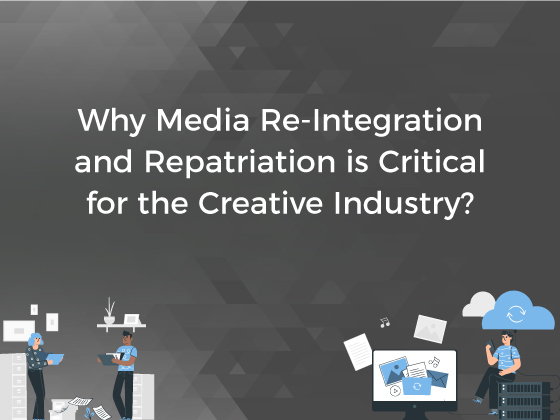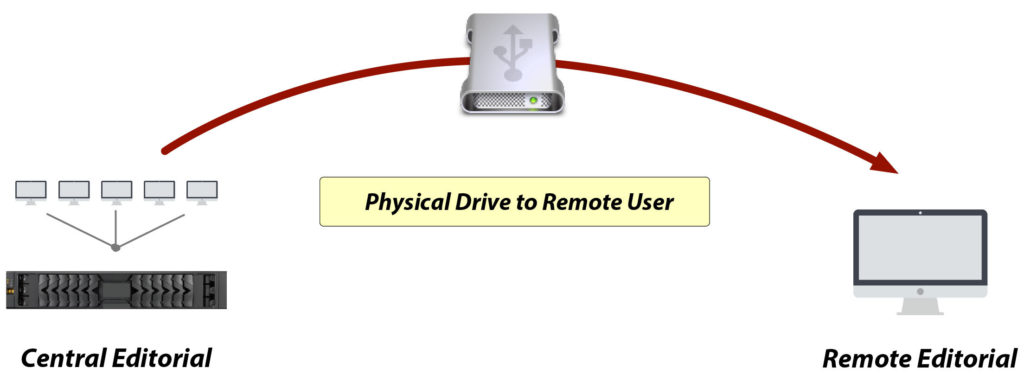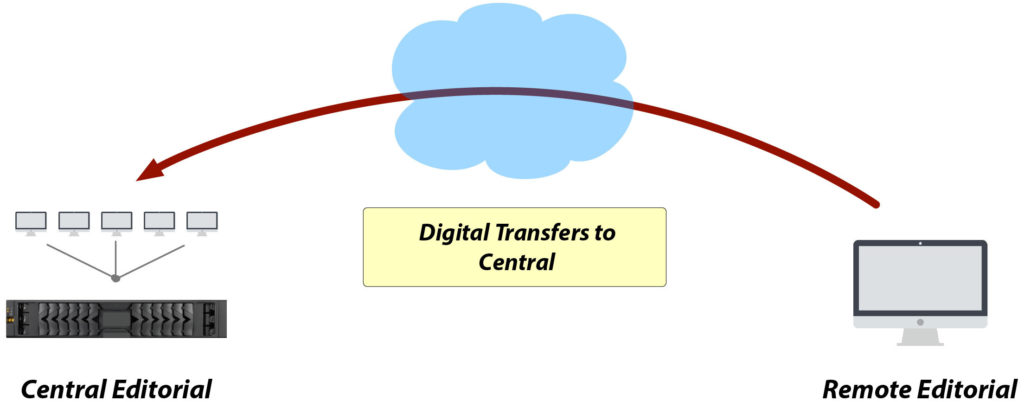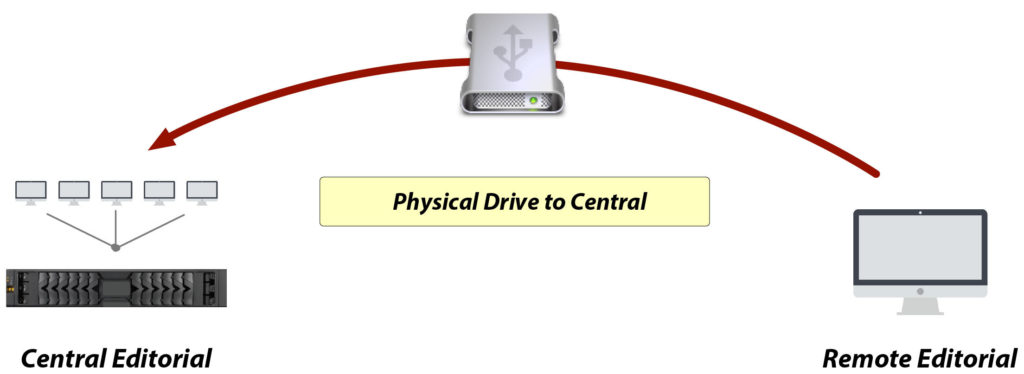
What is Media Re-Integration?
Media re-integration is the process of adding or integrating new media into an existing storage pool and workflow. However, re-integration is more complicated than a simple copy. Media re-integration should not re-copy media that already exists and should respect the media structures of video and audio editing software like Avid Media Composer, Avid Pro tools, Adobe Premiere so as to not corrupt existing database structures.
With remote editing, remote collaboration, and distributed workflows becoming commonplace, this process is quickly becoming a major part of media management in many organizations.
Different Types of Media Re-Integration
Media re-integration is essential in numerous remote editing workflows where creative users take hard drives home and also send media back on hard drives. Beyond physical transfers, media integration is also needed for digital file transfers where updates need to be incrementally sent to and from remote users. In all of the above cases, media that already exists at each end should not be recopied.
We have identified the following types of media re-integration workflows prevalent in a remote production and post pipeline:
- Physical drives sent to remote users
- Digital transfers to remote users
- Physical drives sent back to central
- Digital transfers back to central
Related Article: DNAfabric’s Cloud Shared Workspaces
DNAfabric and Media Re-Integration
DNAfabric is a Wide Area Data Management platform designed to make media re-integration workflows simpler and more automated. It not only performs incremental, intelligent syncs but also respects application folder hierarchies and media database relinking across applications like Avid and Adobe.
DNAfabric can help in the following media re-integration scenarios:

Physical drives sent to remote editors and users
When physical drives are sent to remote users, DNAfabric can perform an intelligent copy from the removable drive to the remote user’s local media storage. This transfer is incremental and can copy only new media by performing a search across one or more existing volumes.

Digital transfers to remote editors users
DNAfabric can also perform incremental digital syncs. DNAfabric agents deployed on remote user systems can search existing volumes and only sync media from central that do not already exist at the remote site. This allows pipelines to send an initial bulk of media on a hard drive and then incrementally trickle new media.

Physical drives sent back to central
Another part of media re-integration is when remote users return to central. In this scenario, users bring back hard drives that need to be re-integrated into central storage. DNAfabric can intelligently search multiple central shared storage volumes and only copy media from hard drives that are not already present. DNAfabric’s ability to search across multiple volumes and directory depths is essential in bringing back only changed media.
Related Article: Cloud Data Management Software for Avid, Adobe, DaVinci Resolve, FCP File Sharing, Collaboration, and Editing

Digital transfers back to central
Besides sending physical media back to central, DNAfabric can incrementally sync back changes from remote users to central. DNAfabric can search across multiple central shared storage volumes and only transfer new files added or updated by the remote user.
Conclusion
DNAfabric enables intelligent syncs and transfers across both local and remote connections. Its key ability is to perform efficient searches across existing storage pools allowing for media to be re-integrated seamlessly into cloud editorial and remote sharing pipelines.
Fill up the short form below to get a demo or know how DNAfabric will seamlessly fit into your remote pipelines.

